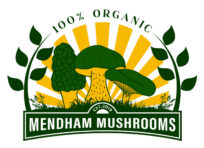Yu Zhang,1 Guoying Zhang,1,* and Jianya Ling1,2,*
Mourad Elhabiri, Academic Editor
Abstract
Pandemics from various viruses make natural organisms face challenges over and over again. Therefore, new antiviral drugs urgently need to be found to solve this problem. However, drug research and development is a very difficult task, and finding new antiviral compounds is desirable. A range of medicinal fungi such as Ganoderma lucidum and Cordyceps sinensis are widely used all over the world, and they can enhance human immunity and direct anti-virus activities and other aspects to play an antiviral role. Medicinal fungi are used as foods or as food supplements. In this review, the species of medicinal fungi with antiviral activity in recent decades and the mechanism of antiviral components were reviewed from the perspectives of human, animal, and plant viruses to provide a comprehensive theory based on better clinical utilization of medicinal fungi as antiviral agents.
Introduction
In today’s world, the outbreak of many infectious diseases has posed a serious threat to human life and health. As early as thousands of years ago, the outbreak of smallpox had caused tens of thousands of human deaths [1]. The outbreak of SARS-CoV-2 has now pushed mankind to the edge of the cliff. The outbreaks of most of these infectious diseases are related to viral infection. At this stage, the greatest threat to humanity is the RNA viruses, because they are very easy to mutate in the process of replication and reverse transcription [2]. This makes the prevention and treatment of RNA viruses very difficult. Classic antiviral drugs such as interferon and ribavirin are effective against most viruses in vitro, but usually not for patients, and because of a series of problems such as drug resistance and the high price of existing medicine [3,4]. More suitable antiviral drugs need to be found quickly.
Medicinal fungi are widely used all over the world. In Pakistan, nearly 23 species of medicinal fungi are used to treat colds, cough, influenza, asthma and other diseases [5]. The United States has added Ganoderma lucidum to the American Herbal Pharmacopoeia and Treatment Program [6]. The medicinal use of medicinal fungi also has a long history in China, which was recorded in Shennong Ben Cao Jing as early as 2000 years ago [7]. It can be used to treat or prevent diseases and has significant biological activity and medicinal value. A series of substances such as proteins, polysaccharides, and alkaloids can be produced in the mycelium, fruiting body, or spores, which has health effects on the human body [8]. Its antiviral, anticancer, and anti-inflammatory effects have attracted more and more attention in recent years [9,10,11]. Because of the special properties of medicinal fungi, their toxicity is much less than that of chemical drugs. During these years, some fungi have gradually developed into medicinal and edible fungi. Medicinal fungi are gradually welcomed by people, greatly improving people’s acceptance.
There has been a good summary of antiviral polysaccharides from medicinal fungi [7]. In this article, we further summarized the macromolecular and small molecular antiviral components of medicinal fungi and further classified them according to human viruses, animal viruses, and plant viruses (Table 1 and Table 2). The purpose of this review is to provide a reference for the development of medicinal fungi in the field of antivirus and to facilitate the follow-up antiviral research.
